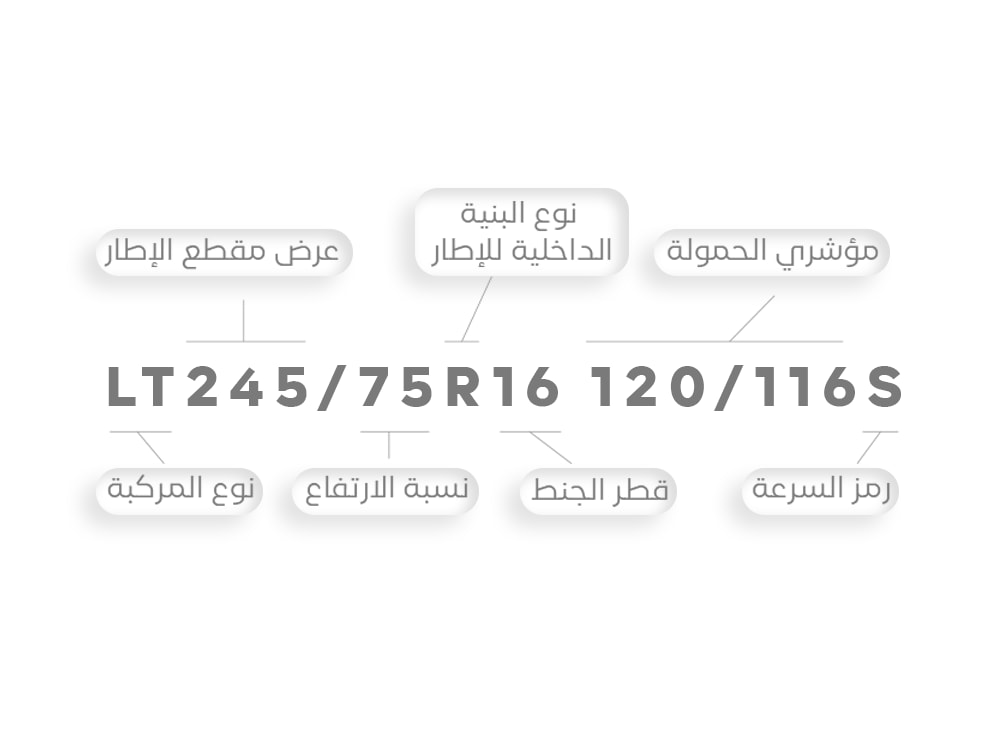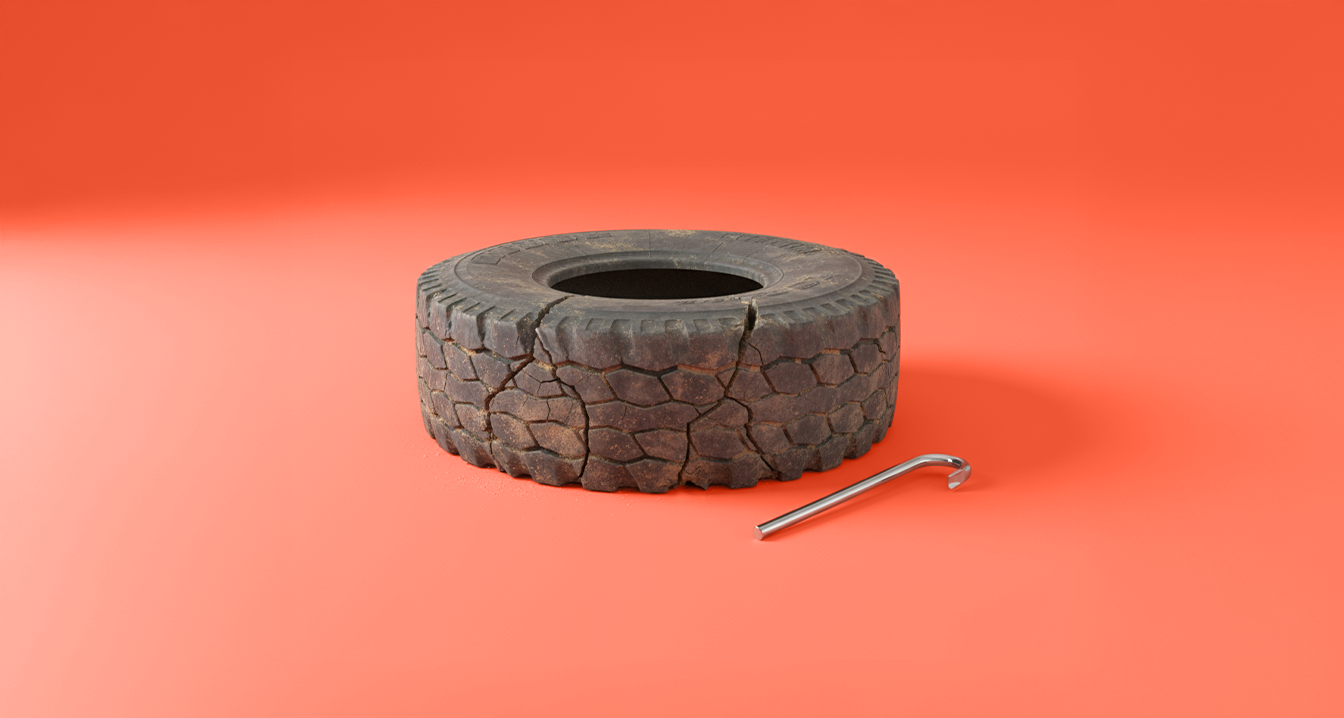What do you think of this code: P215/65715 95H?
Surely you found a similar symbol on your car tire. What does it mean? Why all the complications? These symbols and numbers may seem like just a technical talisman, but the truth is that these symbols carry vital information related to your safety, car performance, and fuel consumption.
Knowing these symbols does not require you to be a mechanical expert, but only a few minutes of correct understanding to be able to choose the perfect frame with confidence. It is very easy.
Remember the code we started with “P215/65715 95H”. After a while, we will analyze it and it will become an axiom for you. In this article, we will take you on a simple tour that explains how to read tire symbols easily, what each field means, and how to use this knowledge to choose a frame that suits your needs.
This code P215/65715 95H is not a meaningless symbol on the tire. It is a message from the manufacturer to help you choose a tire: it keeps you and your car safe and reduces your fuel consumption.
Tire codes:
Tire codes are part of a unified global system adopted by the International Standards Organization (ISO), in cooperation with the U.S. Transportation Regulatory Authority (DOT) and the European Union as well, in the seventies of the last century.
These codes actually started to spread on tires in the early eighties. Today, they are a basic standard used by all manufacturers around the world, with the aim of: facilitating the process of understanding and selection by the consumer, and standardizing safety and quality specifications between different countries and manufacturers.
Frame codes are a series of letters and numbers printed on the side of a tire. They are known as “tire side coding”. This encoding identifies a set of information, such as:
- Type of frame.
- Its dimensions.
- His endurance.
- Its maximum speed.
You can easily find these symbols by looking at the side of the outer frame.
Each vehicle has its own tires according to a large number of criteria, such as the weight of the vehicle, the nature of the roads on which it travels, the prevailing climate in the work area, and many other criteria. Accordingly, the appropriate tire is determined. At Darbek, we reduce all these complications to you by choosing the tire that fits perfectly with your vehicle and the nature of its activity.
Explain the basic symbols in the frame:
Let's go back to the code we started this article with to explain it. Each number and letter in this example has a specific meaning, and we will now disassemble it step by step:
P215/65715 95H

The first symbol: the quality of the frame:
It is the first symbol we find on the frame. In our example, this code is: (P), where one of the following symbols is used: (P\ LT\ T\ or no symbol). Each of these symbols has a meaning and significance:
- Code P:
It is an abbreviation for Passenger, and means that this tire is intended for small cars.
- LT code:
It is an abbreviation for Light Truck, and means that these tires are for light trucks.
- Code T:
It is an acronym for Temporary, which means that this tire is a temporary reserve tire.
- No code:
If no code is mentioned at the beginning of the coding, the tire is usually manufactured according to the Common European Standards (Euro-Metric), a classification system that does not require the use of a letter at the beginning of the code. These tires are subject to slightly different specifications in terms of load capacity compared to their American counterparts, but they are accepted and approved globally.
Number two: frame width (215):
It is the number immediately below and expresses the actual width of the tire (Tread Width), i.e. the distance between the two outer sidewalls of the tire. It is measured in mm. In our example, the width of the tread is 215 mm.
Sometimes this measurement does not include only the part in contact with the road, but also the sides of the tire. You find this error in tires that do not have the quality mark and are not internationally approved.
Number three: aspect ratio (65):
This number expresses what is known as the “Aspect Ratio”. It shows the ratio between the height of the tire sidewall (from the rim to the tip of the tread) and the overall width of the tire.
In our example, the number is 65, meaning that the height of the sidewall is equal to 65% of the frame width of 215 mm, meaning that:
The actual height of the sidewall = 215 x 0.65 and is approximately 139.75 mm.
The lower this ratio, the shorter the sidewall, giving sporty performance and higher responsiveness, while the larger ratio provides more comfort while driving.
Code 4: Internal structure type (R, D, B):
This symbol indicates the method of manufacturing the internal structure of the tire, i.e. how the layers of fibers and rubber were arranged inside the tire. In our example, this symbol is (R). The symbols used and the meaning of each symbol are:
- The R symbol (Radial):
It is the most common method at the moment. In this type, the fabric layers are extended radially from the center of the tire towards the sides at a right angle (90 degrees), giving the tire greater flexibility, better stability, and lower fuel consumption
The R code is used in most passenger cars
- The D symbol (Diagonal or Bias Ply):
In this design, the fabric layers are crossed at an inclined angle (often 30 to 45 degrees) in an opposite manner, giving the tire extra strength and high load bearing, but with less flexibility and higher road friction.
Code D is often used in agricultural trucks or heavy machinery
- The symbol B, which stands for (Bias Belted):
It is a hybrid type that combines traditional Bias technology and additional reinforcement with a steel belt, which improves the grip of the tire without sacrificing total flexibility. It is less common today but is still used in certain types of tires.
Understanding the internal structure of a tire helps you choose the right tire depending on the type of vehicle and the nature of use, especially if you are driving in harsh conditions or carrying heavy loads.
Code 5: Rim diameter:
The number that follows the type of internal structure indicates the size of the rim (metal wheel) on which the tire is mounted. It is measured in inches. In our example, the rim size is 15.
Symbol 6: Load Index:
A number that indicates the maximum weight that a tire can withstand. In our example, the number 95 is equal to a load of approximately 690 kg, according to the approved load index tables.
The seventh symbol is: The speed code is:
It indicates the maximum speed that a tire can safely withstand, depending on the specifications.
In our example, the letter H maintains safety up to 210 km/h.
The order of the symbols is simple and simple: the quality of the tire, its width, the ratio of height to width, its structure, the diameter of the rim, the load and the speed.
Additional important codes to know:
Before we review these codes, it's important to know that this additional information serves as a “scorecard” for each frame. It tells you about:
- Its corrosion tolerance.
- Its ability to hold together.
- Its heat resistance.
- The date it was manufactured.
Knowing these details will enable you to compare tires accurately and choose the most appropriate and safest option.
Tread Wear Index ():
It is a number that determines the life span of a tire. The higher the number, the higher the wear resistance.
Cohesion (Traction):
It is measured by the letters AA, A, B, C and indicates the ability of a tire to stop on wet roads.
Temperature resistance (Temperature):
It is also measured by the letters (A, B, C). A is considered the highest efficiency.
Manufacturing Code (DOT Code):
It shows the date of manufacture of the tire, and the last four digits indicate the week and year of production.
(Example: 2323 = week 23 of 2023)
Knowing the additional frame code helps you identify the right tire for you very accurately
These symbols help you identify: indicators of wear, cohesion, heat resistance, and year of manufacture
Now... How can I use these codes to choose the right frame?
After we understood the symbols, the choice became very simple, according to a number of indicators, the most important of which are:
Type of vehicle:
Passenger cars need P tires, while light trucks have better LT tires.
Depending on the weather:
The symbol of heat and traction are very important in the warm Gulf climate.
Type of use:
For long travel, choose tires that have a high speed and load.
Common mistakes drivers make:
Although the tire symbols are clearly written on the side of the tire, many drivers make repeated mistakes that may lead to wrong purchase decisions or unsafe use of tires. Here are the most prominent of these mistakes:
Rely on the format only:
Some drivers choose a tire based on its exterior appearance or pattern design only, without regard to the load index or speed code appropriate to the vehicle.
Confusing the manufacturing date with the end date:
Some people think that a tire is valid as long as it looks new, but tires have a lifetime even if they are not used. It is usually recommended not to use a tire that is more than 5 years old even if it has not been installed before.
Using tires with a lower load or speed than recommended:
This may cause the tire to become damaged or burst at high loads or high speeds.
Relying on the advice of a non-specialist:
Buying a tire based on unreliable advice or without consulting the vehicle manual may put the driver at risk.
Ignore climate differences:
Some drivers do not take into account climatic conditions when choosing a tire, such as using a summer tire in very cold areas, which weakens the performance of the tire and increases the risk of skidding.
Relying only on shape in buying a tire, ignoring climate differences, relying on the advice of a non-specialist, and using tires with a lower load or speed than recommended. Avoiding all these mistakes is the first step towards safer and smarter driving, and choosing a tire that meets your real needs.
How does your path help you?
At “Darbak” we don't just sell the tire, but we give you a free consultation to choose the most suitable one, based on:
- The type of car.
- The nature of the road.
- climatic conditions.
- Available budget.
Our team will read the codes for you, explain them to you in simple language, and even help you understand the difference between the available options, so you don't choose the cheapest framework, but the best one.
In conclusion...
Tire symbols are not magic symbols that are difficult to understand. They are simple language that tells you everything you need to know about the performance and safety of your tire. With a proper understanding of these symbols, you won't need to guess or ask a question every time.
Make this knowledge a habit and start checking your tires now. If you need someone to accompany you on this road, “Darbak” is always with you.
Your path.. We know how to protect you.







